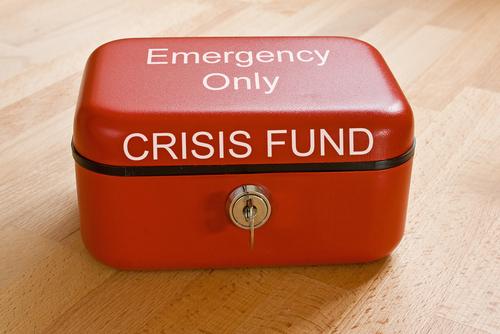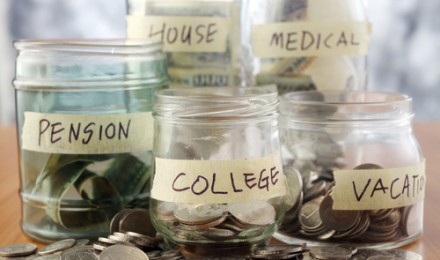Every household needs a rainy day fund, which is easily accessible for the cash you need in case of any unforeseen event. Traditionally, the rule of thumb had been to save the equivalent of 3 to 6 months worth of your household expenses. The biggest question for most individuals concerns what amount of money they should keep in their fund.
At the height of the Great Recession, which ended in June 2009, nearly 8 million Americans lost their jobs. Currently, almost 5 million Americans have been unemployed 27 weeks, based on Department of Labor Statistics.
These labor market dynamics make even six months of contingency funds no longer applicable.
How much should you save?
The Washington, DC -based National Foundation for Credit Counseling (NFCC) states that most financial experts now recommend everyone to put away 9-12 months of income in emergency account to provide a financial buffer in case of job loss, according to NFCC spokesperson Gail Cunningham.
Cunningham reveals that many people who do not have contingency fund must live on credit. “So when they replace their job, they are behind because now they have debt to repay,” said Cunningham.
Establish a goal
How much you can save each month will depend on your income and expenses. Remember, the focus is to save enough money to cover your expenses in case of an emergency, not to replace 100% of your income.
It may be easier to start out, setting a goal to save a small amount say $500, and then work your way up. Establish several benchmarks such as one month’s household expenses, two months… three months… until you have enough money in your reserve to meet your savings objective.
Choosing a savings vehicle
You want to make the money easily accessible, but do not make the money so easy to get at that you’ll be tempted withdraw money for day-to-day spending needs. Open an account separate from your normal checking account. This approach creates a mental barrier between your daily spending habits and the emergency fund.
A good place to open an account is with you credit union because you can start with smaller amounts of money. Another good alternative is an online bank because you cannot easily find a branch office to walk into and withdraw money.
You can choose to save in a variety of instruments
- Standard savings account
- Money market account
- Three or six month Certificate of Deposits (CDs)
Money market accounts and CDs have certain minimum requirements but pay out higher interest rates.
Make it a monthly bill payment
Make payments to your rainy day fund a monthly savings objective. Make it easy by setting up an automatic monthly transfer as you would do with a utility bill or insurance payment.
Direct payments into your account will help you accumulate money regularly. You will need to determine your household budget so that you can create a balance budget and figure out how much you can save each month.
Other tips
Start your emergency fund immediately—even if you only save $50 per month. Increase the amount when you can by adding bonuses, overtime pay, or wage increases to build the fund faster.
Do not tap your rainy day fund funds to pay for once a year emergencies, such as an annual insurance premium or pay vehicle repairs. Consequently, you should not use the cash to buy new clothes, dine out, finance a week-end trip, or other indulgences. Do keep the checkbook on your person and reject any offer for a debit card.
Every household needs a rainy day fund, which is easily accessible for the cash you need in case of any unforeseen event. Traditionally, the rule of thumb had been to save the equivalent of 3 to 6 months worth of your household expenses. The biggest question for most individuals concerns what amount of money they should keep in their fund.
At the height of the Great Recession, which ended in June 2009, nearly 8 million Americans lost their jobs. Currently, almost 5 million Americans have been unemployed 27 weeks, based on Department of Labor Statistics.
These labor market dynamics make even six months of contingency funds no longer applicable.
How much should you save?
The Washington, DC -based National Foundation for Credit Counseling (NFCC) states that most financial experts now recommend everyone to put away 9-12 months of income in emergency account to provide a financial buffer in case of job loss, according to NFCC spokesperson Gail Cunningham.
Cunningham reveals that many people who do not have contingency fund must live on credit. “So when they replace their job, they are behind because now they have debt to repay,” said Cunningham.
Establish a goal
How much you can save each month will depend on your income and expenses. Remember, the focus is to save enough money to cover your expenses in case of an emergency, not to replace 100% of your income.
It may be easier to start out, setting a goal to save a small amount say $500, and then work your way up. Establish several benchmarks such as one month’s household expenses, two months… three months… until you have enough money in your reserve to meet your savings objective.
Choosing a savings vehicle
You want to make the money easily accessible, but do not make the money so easy to get at that you’ll be tempted withdraw money for day-to-day spending needs. Open an account separate from your normal checking account. This approach creates a mental barrier between your daily spending habits and the emergency fund.
A good place to open an account is with you credit union because you can start with smaller amounts of money. Another good alternative is an online bank because you cannot easily find a branch office to walk into and withdraw money.
You can choose to save in a variety of instruments
- Standard savings account
- Money market account
- Three or six month Certificate of Deposits (CDs)
Money market accounts and CDs have certain minimum requirements but pay out higher interest rates.
Make it a monthly bill payment
Make payments to your rainy day fund a monthly savings objective. Make it easy by setting up an automatic monthly transfer as you would do with a utility bill or insurance payment.
Direct payments into your account will help you accumulate money regularly. You will need to determine your household budget so that you can create a balance budget and figure out how much you can save each month.
Other tips
Start your emergency fund immediately—even if you only save $50 per month. Increase the amount when you can by adding bonuses, overtime pay, or wage increases to build the fund faster.
Do not tap your rainy day fund funds to pay for once a year emergencies, such as an annual insurance premium or pay vehicle repairs. Consequently, you should not use the cash to buy new clothes, dine out, finance a week-end trip, or other indulgences. Do keep the checkbook on your person and reject any offer for a debit card.







